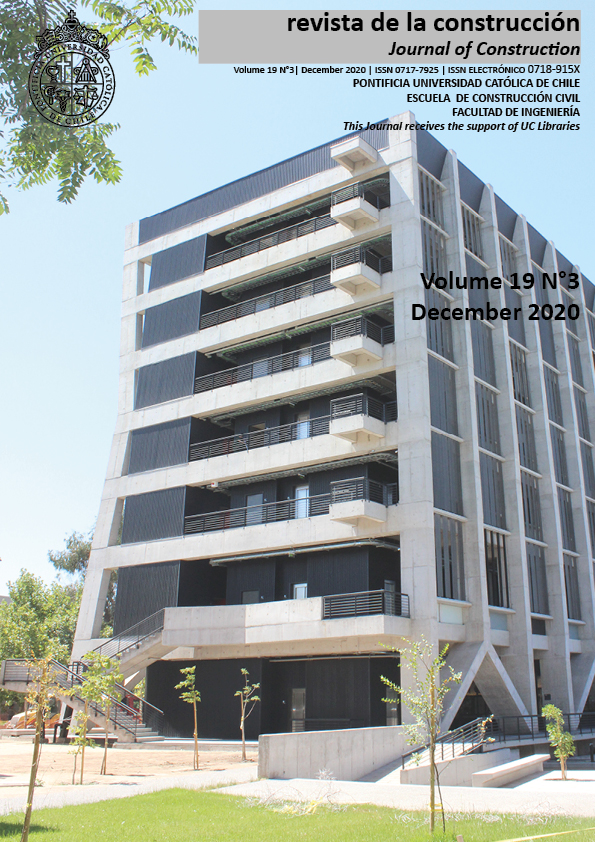Concrete structures monitoring using ultrasonic tests
DOI:
https://doi.org/10.7764/rdlc.19.3.246-257Abstract
Due to the nature of their use, concrete structures are typically subjected to various aggressive actions derived from the loads and the environmental agents, which make the concrete condition change over time. Constant monitoring of structures is a necessary procedure since the preventive detection of problems allows the use of more straightforward and cost-effective methods for evaluation and repair. In order to carry out continuous monitoring of the state condition of concrete elements, there are many tools available. Nondestructive Testing (NDT) applications are a new strategy to monitor the state of concrete structures continually. Recent advancements in NDT technologies are increasingly turning them into attractive and viable strategies to support this type of monitoring and visual inspection. In particular, besides been viable and attractive, ultrasonic tests are a relatively cheap alternative and represent a range of different methods, each one with its benefits, to analyze concrete structures. The Research Group of LEME-UFRGS has developed research and application of NDT methods in general, and ultrasonic based methods in particular, for the last 15 years. The research done by the group demonstrates that these methods can contribute to monitoring deterioration and the quality of concrete structures. The present study demonstrates particular cases involving ultrasonic pulse testing and ultrasonic tomography. The aim was to check for these technique improvements for the analysis of concrete elements. The results highlight the potentialities and shortcomings of each technique.





